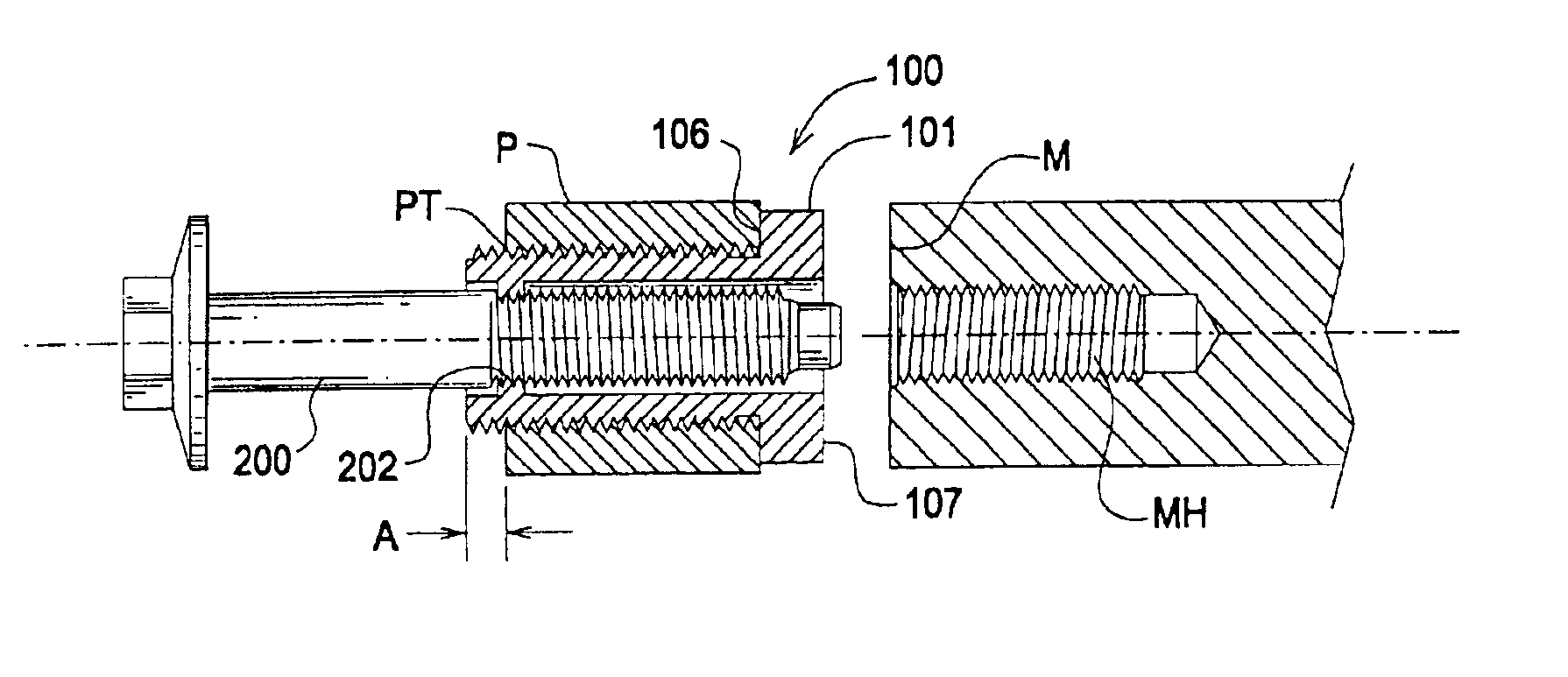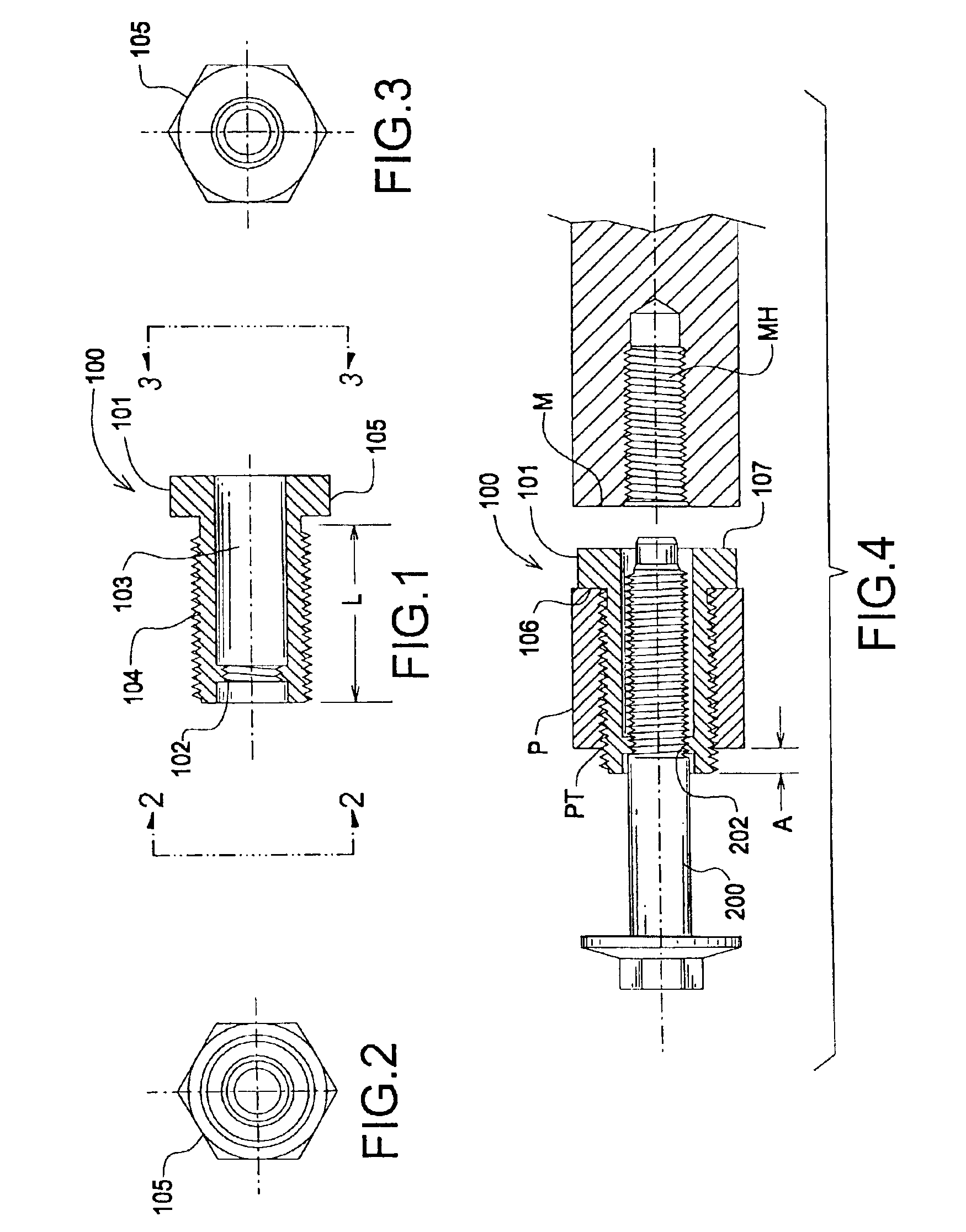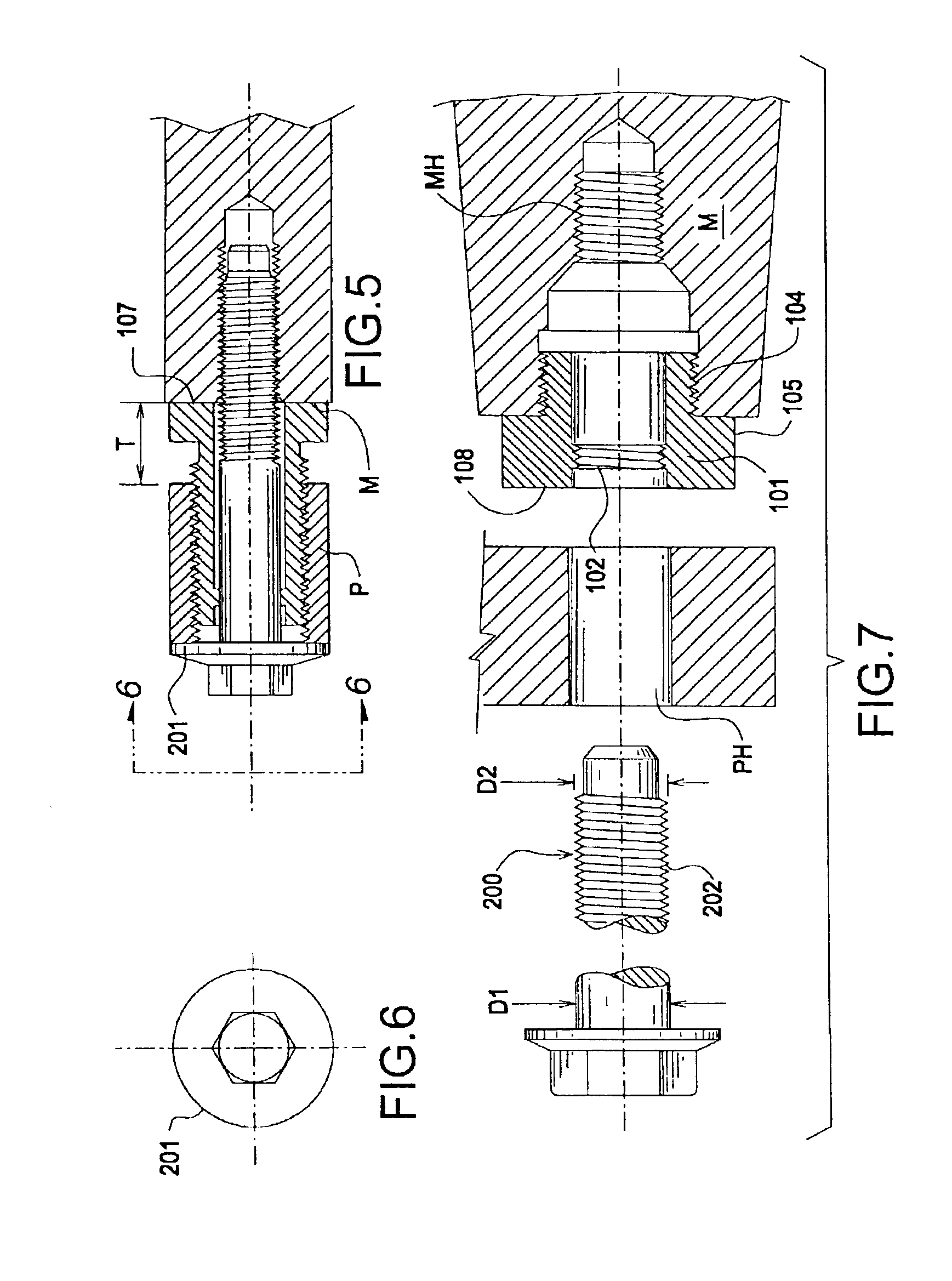Tolerance compensating mounting device
a technology of tolerating and mounting devices, which is applied in the direction of screws, washers, gearing, etc., can solve the problems of affecting the assembly of equipment components, unable to always be eliminated, and creating significant dimensional deviations or gaps
- Summary
- Abstract
- Description
- Claims
- Application Information
AI Technical Summary
Benefits of technology
Problems solved by technology
Method used
Image
Examples
Embodiment Construction
[0031]FIG. 1 is a cross-section view of the tolerance compensating mounting device. The inventive device 100 comprises bushing 101. Bushing 101 is substantially cylindrical. Bushing 101 having a surface feature 102 comprising a thread. Surface feature 102 may comprise raised potions of the surface for engaging a fastener as described herein. In the preferred embodiment surface feature comprises thread 102.
[0032]Thread 102 comprises approximately two pitches of any thread form known in the art. Bushing 101 also comprises bore or hole 103 that runs the length of bushing 101 along a major axis. Bolt 200 engages bushing 101 through hole 103. Bolt 200, see FIG. 4, engages threads 102. An internal minor diameter of threads 102 is less than an internal diameter of hole 103 such that threads 102 may engage a bolt without bolt 200 engaging a surface of hole 103.
[0033]Bushing 101 comprises a metallic material on the preferred embodiment. However, one can appreciate that it may also comprise a...
PUM
 Login to View More
Login to View More Abstract
Description
Claims
Application Information
 Login to View More
Login to View More - R&D
- Intellectual Property
- Life Sciences
- Materials
- Tech Scout
- Unparalleled Data Quality
- Higher Quality Content
- 60% Fewer Hallucinations
Browse by: Latest US Patents, China's latest patents, Technical Efficacy Thesaurus, Application Domain, Technology Topic, Popular Technical Reports.
© 2025 PatSnap. All rights reserved.Legal|Privacy policy|Modern Slavery Act Transparency Statement|Sitemap|About US| Contact US: help@patsnap.com



